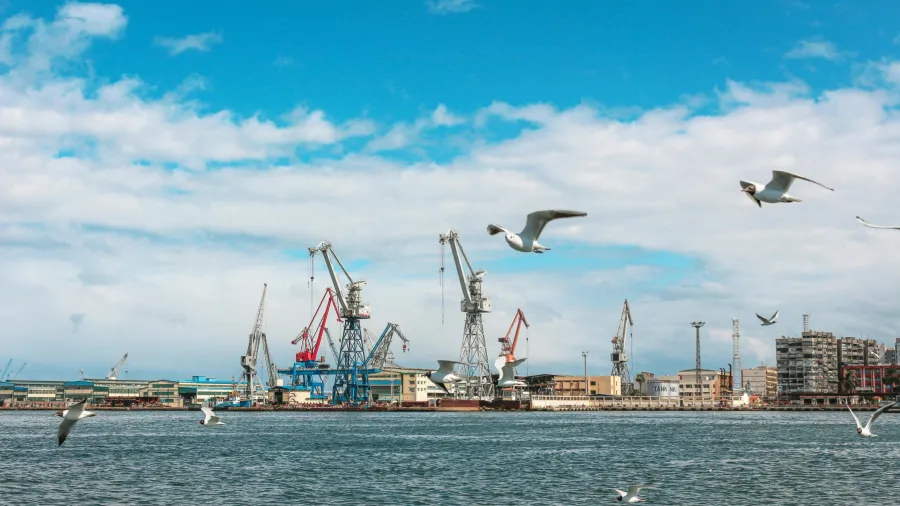
GDSC set to boost green jobs, health, and economic growth
It is forecasted to create over 700 new job opportunities in zero and near-zero emission fuel production.
The Green and Digital Shipping Corridor (GDSC) is poised to create more green jobs, better health for local communities, and economic benefits for the participating countries, according to a recent study by The Maritime and Port Authority of Singapore (MPA), Port of Los Angeles, and Port of Long Beach.
According to the report, the corridor could create over 700 new job opportunities in zero and near-zero emission fuel production and significantly improve local air quality at full implementation.
In terms of energy demand, vessels operating on the corridor represent 7% of the world’s container trade, with an estimated annual energy demand of approximately 60,000 terajoules (TJ).
Shipping demand is also projected to reach around 850,000 tons of methanol and 160,000 tons of ammonia annually by 2030, displacing emissions equivalent to almost 320,000 cars.
The study, commissioned by C40 and the ports, and conducted by the American
Bureau of Shipping, analysed maritime trade flows and energy demand requirements for vessels operating on the corridor up to 2050.
It also aligns with the corridor’s Partnership Strategy unveiled at the 28th United Nations Climate Change Conference (COP28/CMP18/CMA5) in December 2023, outlining the corridor’s goals, partnership structure, and governance mechanism.
Singapore, Los Angeles, and Long Beach, as key stakeholders in the maritime sector’s green and digital transition, are members of C40's Green Ports Forum and are committed to championing ambitious green shipping corridors.
Teo Eng Dih, chief executive of MPA, cited the importance of the GDSC in the multi-faceted partnership with the US, highlighting the significance of innovation and capacity building across industry, researchers, government, and society.
Gene Seroka, executive director of Port of Los Angeles, also stressed the need for coordination and commitment from public and private stakeholders to achieve the required reductions in greenhouse gas emissions.
ALSO READ: CSA invests $10m to boost maritime biofuel in Singapore
Moreover, Mario Cordero, CEO of Port of Long Beach, pointed out the vital role of the partnership in targeting shipborne emissions for economic and health benefits along the trans-Pacific trade corridor.
Mark Watts, executive director of C40, also underscored the urgency of decarbonising the shipping sector and the potential of the initiative to create green jobs and health benefits for local communities.



![SBR 5 Lorem Ipsum News 2 [8 May]](https://cmg-qa.s3.ap-southeast-1.amazonaws.com/s3fs-public/styles/exclusive_featured_article/public/2025-05/a_hand_pointing_to_a_futuristic_technology_5b87c9d0e3_3.png.webp?itok=M3Hf-9XR)
![SBR 4 Lorem Ipsum [8 May Top Stories]](https://cmg-qa.s3.ap-southeast-1.amazonaws.com/s3fs-public/styles/exclusive_featured_article/public/2025-05/a_hand_pointing_to_a_futuristic_technology_5b87c9d0e3_2.png.webp?itok=2m5Wl0MX)


![Exclusive three SBR 12 Lorem Ipsum [8 May]](https://cmg-qa.s3.ap-southeast-1.amazonaws.com/s3fs-public/styles/exclusive_featured_article/public/2025-05/a_hand_pointing_to_a_futuristic_technology_5b87c9d0e3_11.png.webp?itok=8kn_UIfA)
![SBR 3 Lorem Ipsum [ Exclusive 2]](https://cmg-qa.s3.ap-southeast-1.amazonaws.com/s3fs-public/styles/exclusive_featured_article/public/2025-05/a_hand_pointing_to_a_futuristic_technology_5b87c9d0e3_1.png.webp?itok=YCyjLegJ)
![SBR 2 Lorem Ipsum [8 May]](https://cmg-qa.s3.ap-southeast-1.amazonaws.com/s3fs-public/styles/exclusive_featured_article/public/2025-05/a_hand_pointing_to_a_futuristic_technology_5b87c9d0e3_0.png.webp?itok=_cKD-29o)

![Video [Event News]](https://cmg-qa.s3.ap-southeast-1.amazonaws.com/s3fs-public/styles/event_news_featured_article/public/2025-05/screenshot-2025-05-08-at-4.58.53-pm_0.png.webp?itok=Kud35sMs)
![Event News SBR 9 Lorem Ipsum [8 may]](https://cmg-qa.s3.ap-southeast-1.amazonaws.com/s3fs-public/styles/event_news_thumbnail/public/2025-05/a_hand_pointing_to_a_futuristic_technology_5b87c9d0e3_8.png.webp?itok=DTh_dbYp)
![Event News SBR 9 Lorem Ipsum [8 May]](https://cmg-qa.s3.ap-southeast-1.amazonaws.com/s3fs-public/styles/event_news_thumbnail/public/2025-05/a_hand_pointing_to_a_futuristic_technology_5b87c9d0e3_7.png.webp?itok=vzDAzb6V)
![Event News SBR 8 Lorem Ipsum [8 May]](https://cmg-qa.s3.ap-southeast-1.amazonaws.com/s3fs-public/styles/event_news_thumbnail/public/2025-05/a_hand_pointing_to_a_futuristic_technology_5b87c9d0e3_6.png.webp?itok=jvHFc4P6)
![Video [Event News]](https://cmg-qa.s3.ap-southeast-1.amazonaws.com/s3fs-public/styles/video_thumbnail/public/2025-05/screenshot-2025-05-08-at-4.58.53-pm_0.png.webp?itok=yZnI0YBb)
![Video 1 SBR [8 May]](https://cmg-qa.s3.ap-southeast-1.amazonaws.com/s3fs-public/styles/video_thumbnail/public/2025-05/screenshot-2025-05-08-at-4.58.53-pm.png.webp?itok=9AAeRz_k)

 Advertise
Advertise

